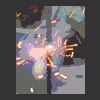- UK Pyrotechnics Society Forums
- → Viewing Profile: Posts: Predator
Community Stats
- Group General Public Members
- Active Posts 11
- Profile Views 6,380
- Member Title Member
- Age Age Unknown
- Birthday Birthday Unknown
-
Gender
 Male
Male
Posts I've Made
In Topic: Comets
22 July 2014 - 11:30 AM
Thats really good and detailed explanation.
Thanks to you both.
In Topic: Two reasons
06 March 2014 - 02:51 AM
In Topic: Star Formulas
03 March 2014 - 03:26 AM
Also dextrin & GA is present in this formula then why to bind this composition with NC?
In Topic: Star Formulas
01 March 2014 - 01:13 PM
what is the role of black Copper oxide in this composition?There are lots of red strobe compositions which use Strontium Nitrate, lots of formulas come up if you do a search here. Here's a random one.
Strontium Nitrate 68.87%
Magnalium, granular, -100 mesh 22.50%
Parlon 3.44%
Dextrin 1.72%
Gum Arabic 1.72%
Copper(II) Oxide, black 0.87%
Copper(II) Oxychloride 0.87%
Bind with 10% NC lacquer
They don't tend to quite as good as AP-based strobes but you can certainly make something useable.
why sulfur is not present here as many strobe formulas use it?
In Topic: Glitter Question
28 February 2014 - 03:27 AM
Too much moisture isn't the problem. The real problem is staying wet too long. It's quite easy to cut glitters with 30+% water and have them function perfectly well if you dry them in a reasonable amount of time. It should be noted that even with the same formula, the effect will be slightly different between cutting, rolling, and pumping.
Also, glitters are particularly sensitive to binding conditions. Red gum and parlon kill the effect quite well. I've seen some people have luck with other non-aqueous binders like PVB (I think) and possibly some phenolic resins. Not all are created equally though. You'll have to try them out and see what works. NC will probably affect the glitter phenomenon as well. Forming the sprizels is surprisingly touchy.
- UK Pyrotechnics Society Forums
- → Viewing Profile: Posts: Predator
- Privacy Policy
- Forum rules ·




 Find content
Find content

